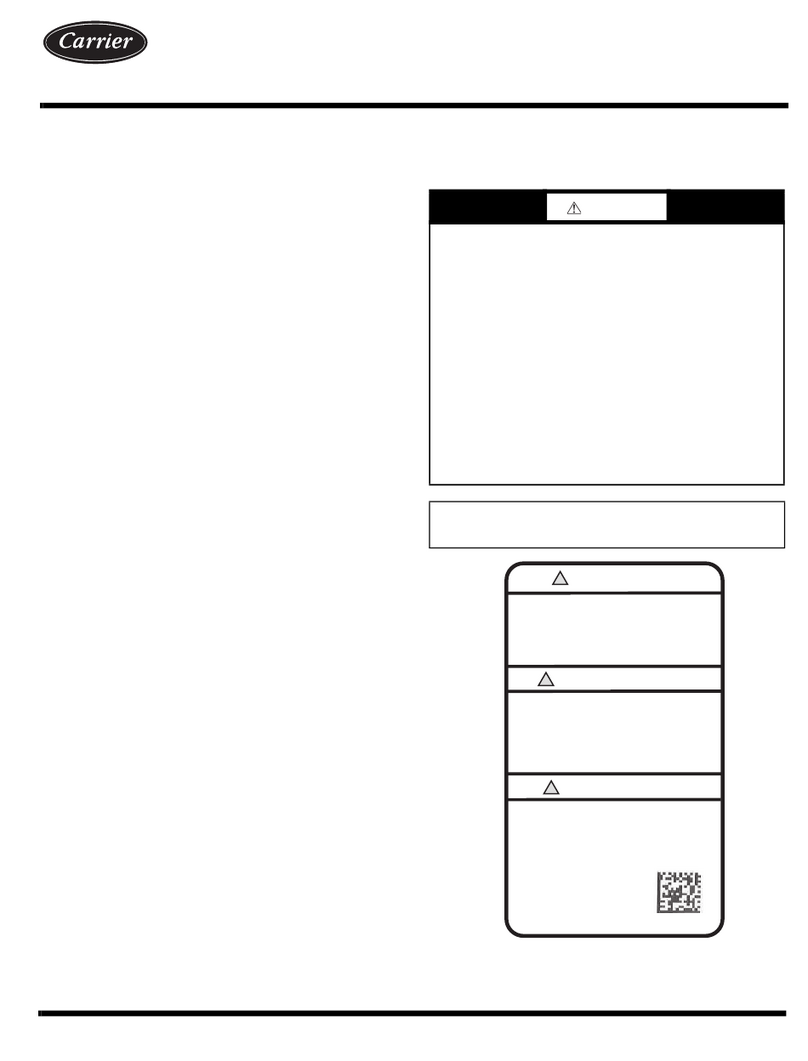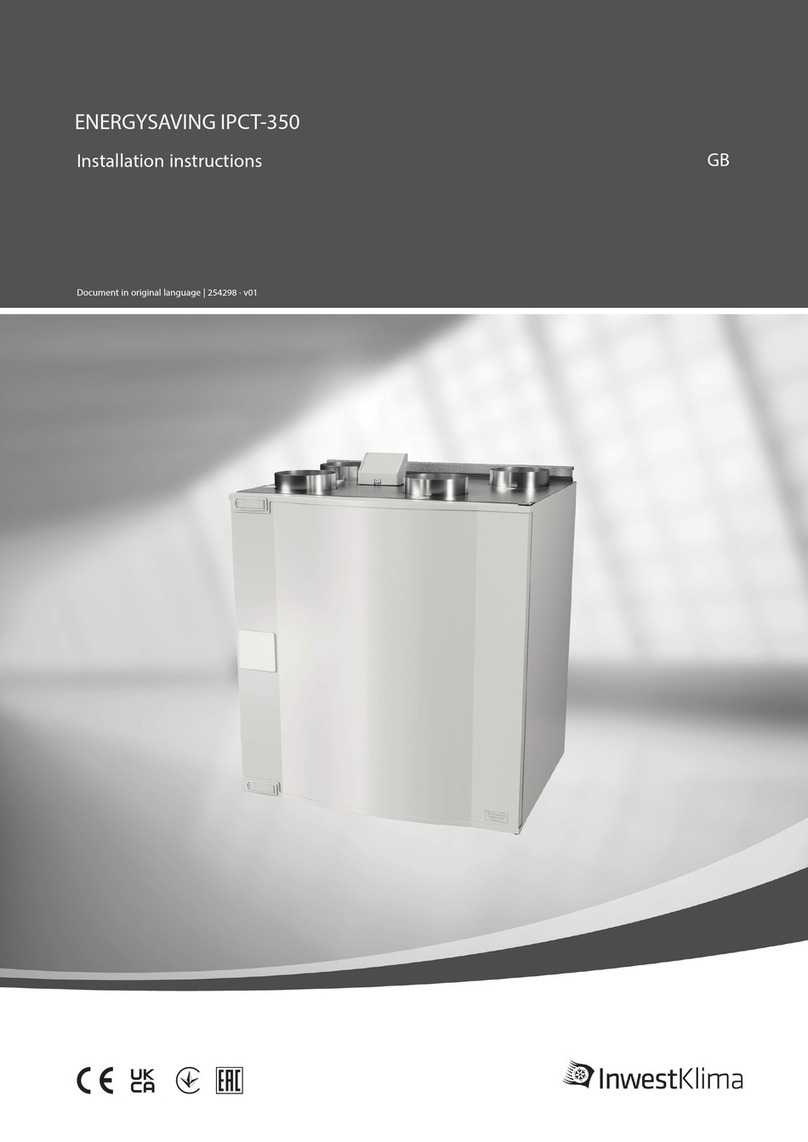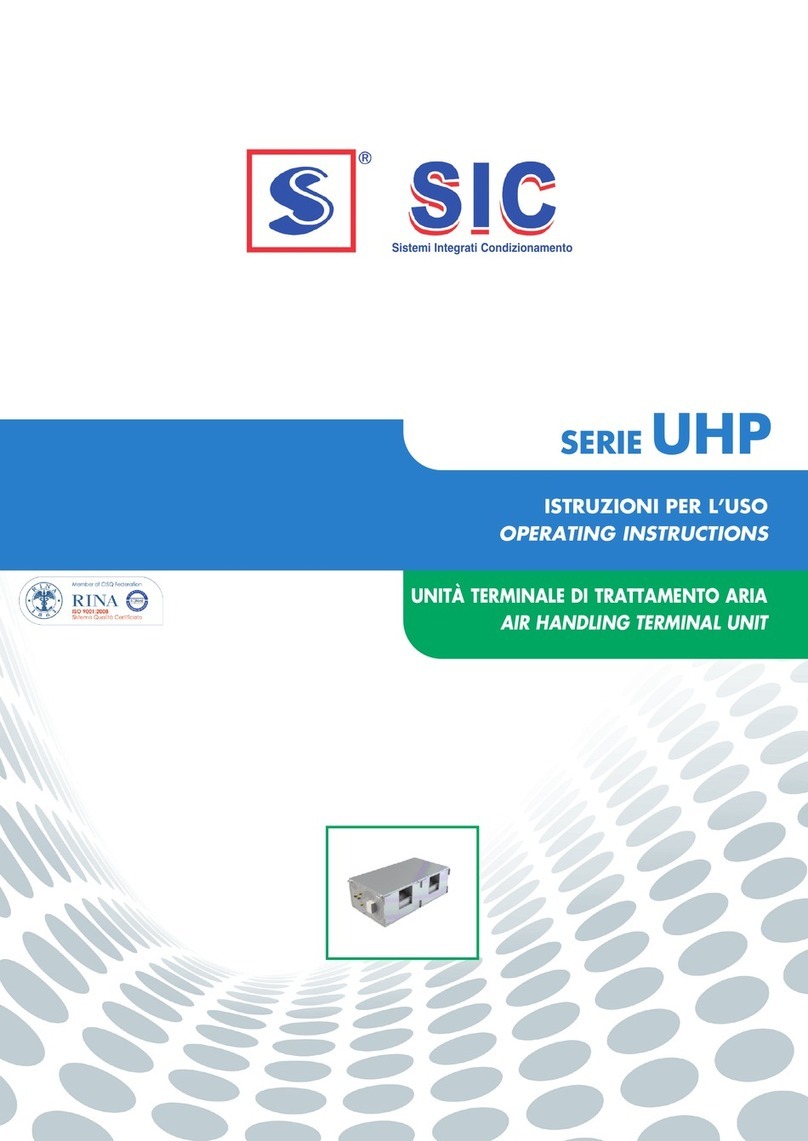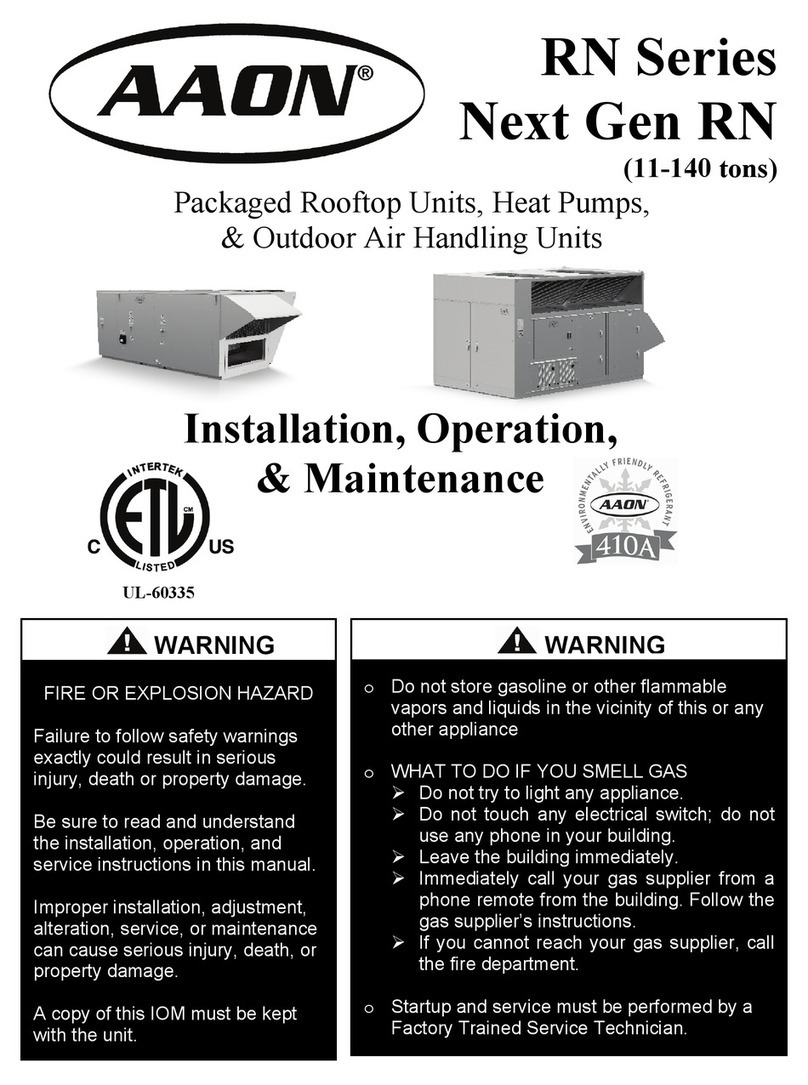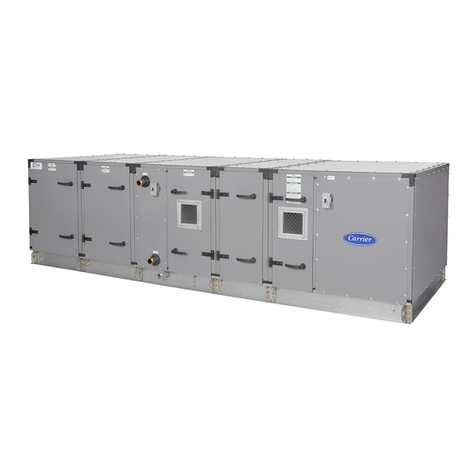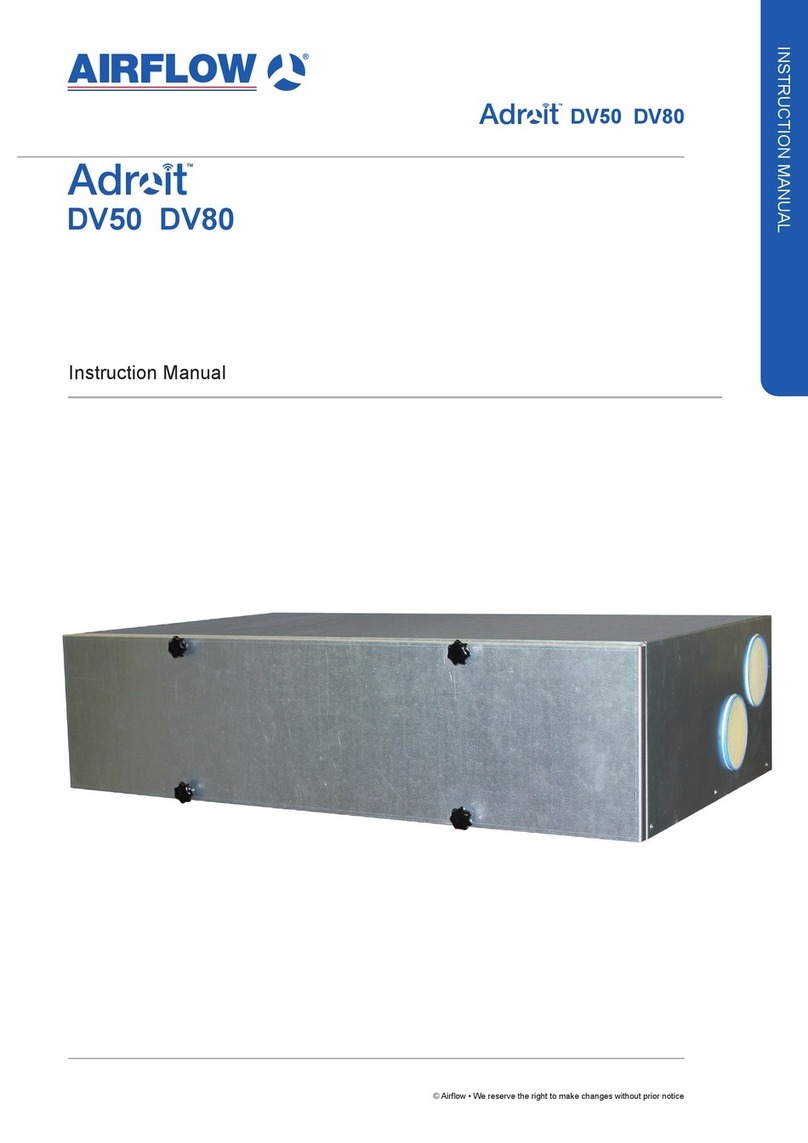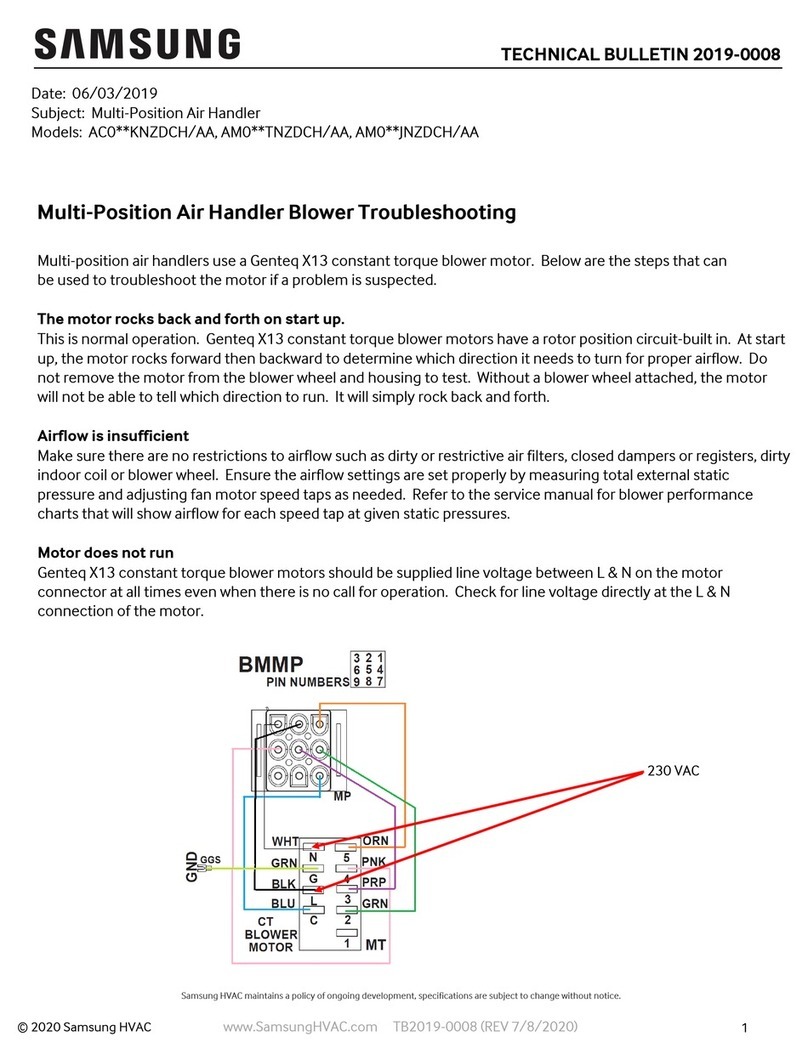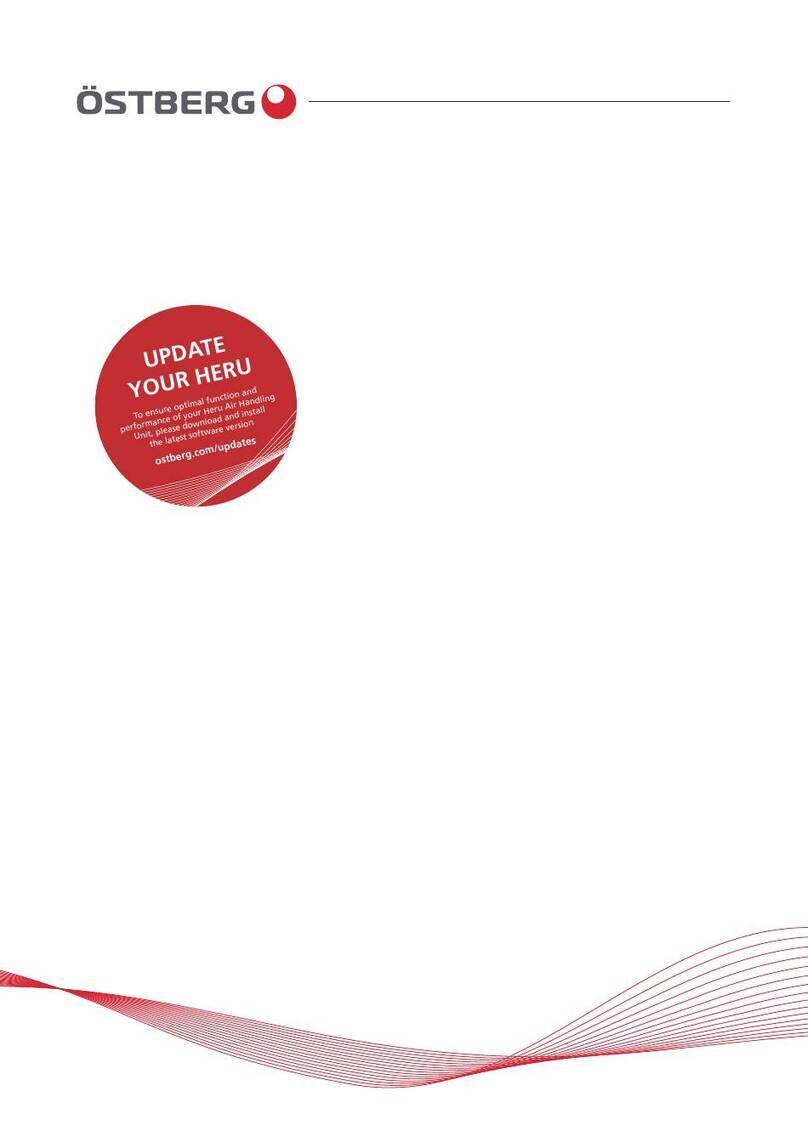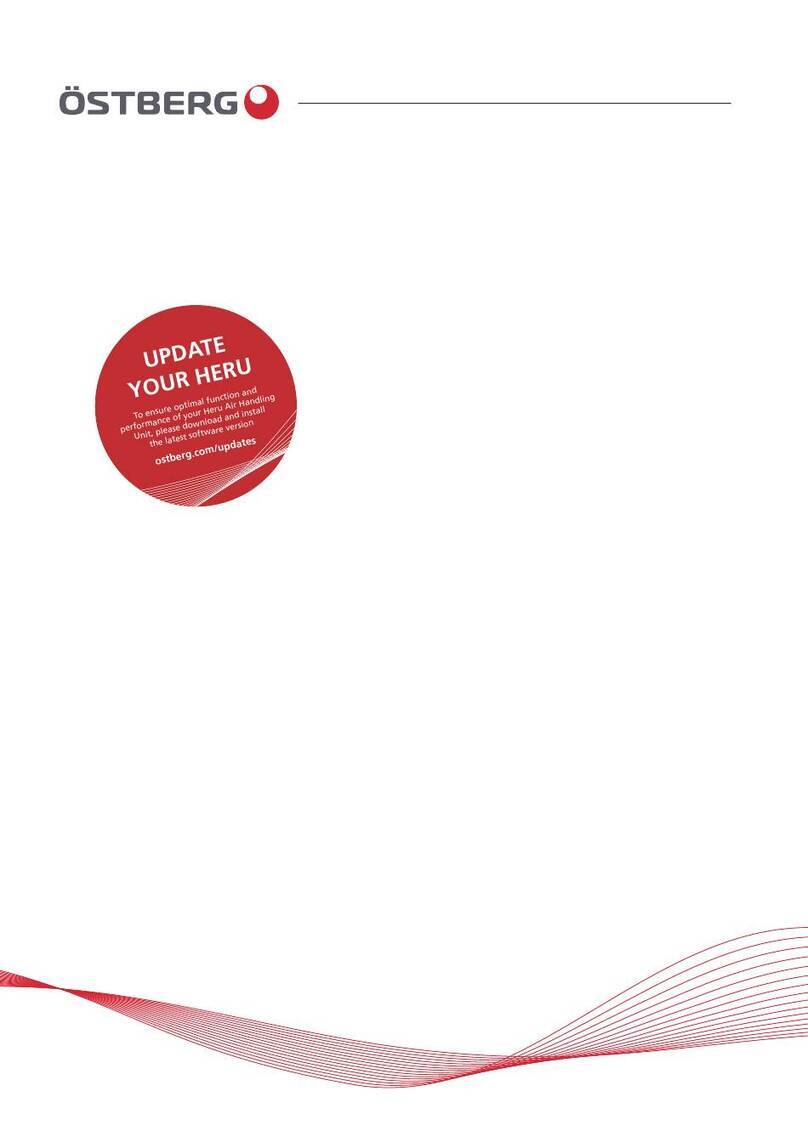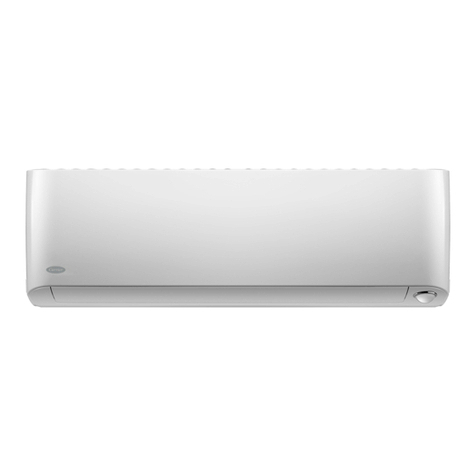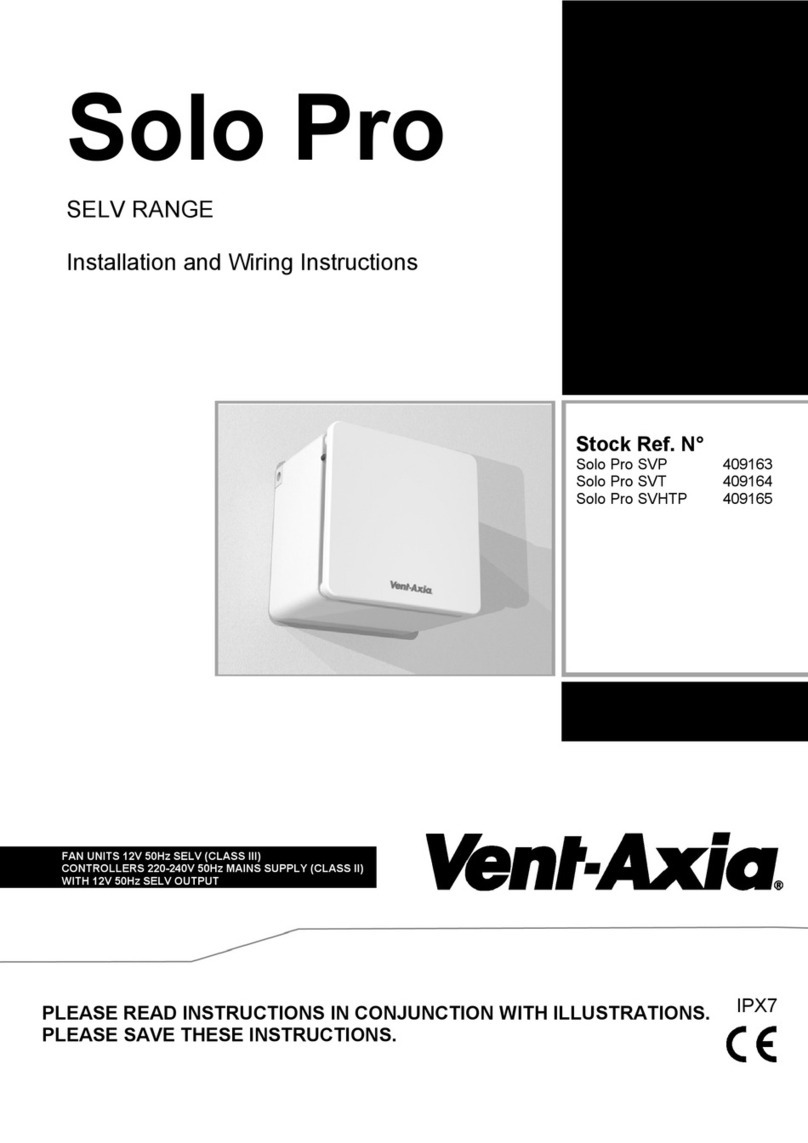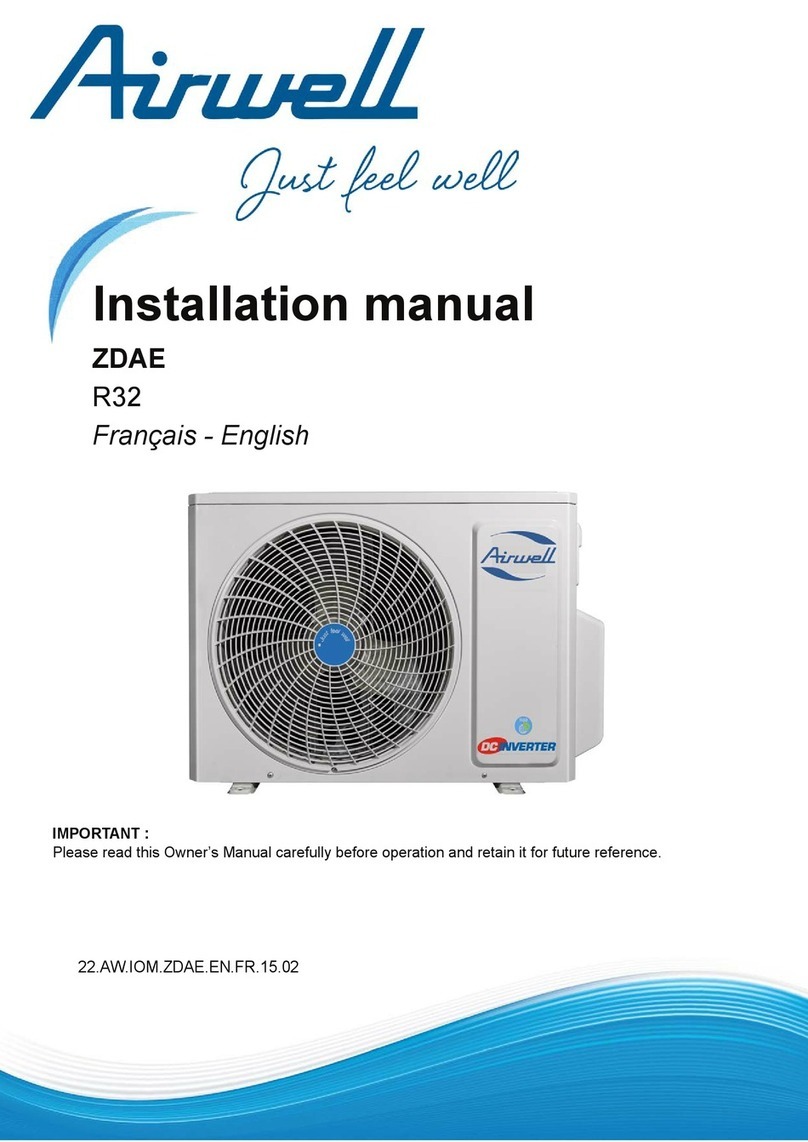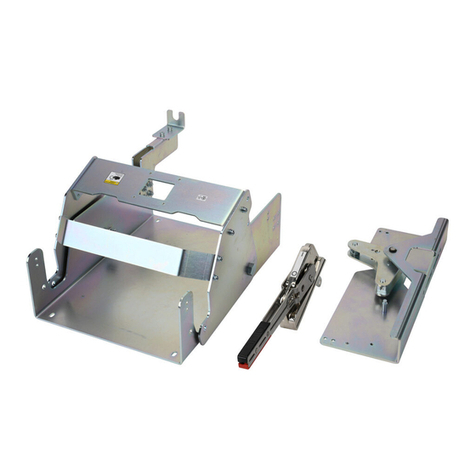• The fan must be installed according to the air direc-
tion label on the fan.
• The fan must be connected to duct or equipped with
a safety grille.
• The fan should be installed in a safe way and make
sure that no foreign objects are left behind.
• The fan should be installed in a way that makes ser-
vice and maintenance easy.
• The fan should be installed in a way that vibrations
can not be transfused to duct or building. To provi-
de this, use for example a duct clamp.
• To regulate the speed a transformer or thyristor can
be connected.
• A wiring diagram is applied on the inside of the junc-
tion box or separately enclosed.
• The fan must be installed and connected electrical-
ly in the correct way grounded.
• Electrical installations must be made by an authori-
zed electrician.
• Electrical installations must be connected to a local-
ly situated tension free switcher or by a lockable
head switcher.
• The strain relief is in the junction box and should be
mount from the inside, see picture.
• The fan is used for transportation of “clean” air, mea-
ning not intended for fire-dangerous substances,
explosives, grinding dust, soot, etc.
• The fan is equipped with an asynchronous external
rotor induction motor with maintenance-free sealed
ball-bearings.
• The capacitor has finite lifetime and should be ex-
changed after 45.000 hours of operation (about 5
years) to secure maximum function. Defective capa-
citor can cause damage.
• To achieve maximum life time for installations in
damp or cold environments, the fan should be ope-
rating continuously.
• The fan can be installed outside or in other damp
environments. Make sure that the fan-house is equ-
ipped with drainage.
• All fans are as standard, single phase 230V, 50 Hz
and 220V, 60 Hz. Other voltages/frequencies on
request.
• The fan can be installed in any position.
8
INSTALLATION
This directions for use contains following products:
CK 100, CK 125, CK 150, CK 160, CK 200, CK 250 and CK 315
DESCRIPTION
ENGLISH
